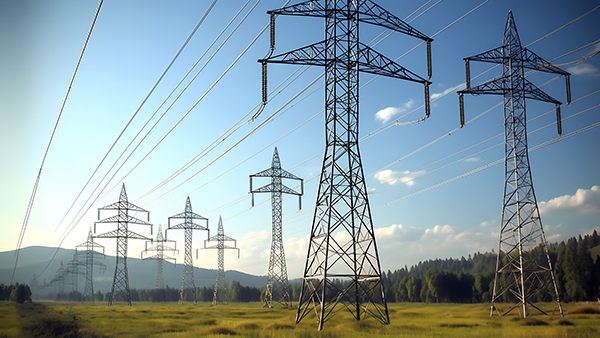
Arctic LNG-2 will be powered by Russian Turbines
NOVATEK has once again revised the composition of key equipment for the power supply of the Arctic LNG-2 plant under construction. Instead of procuring machines from the Chinese Harbin Guanghan Gas Turbine, which may not meet the deadline, the company has ordered three GTE-170 units from Power Machines to supply power to the second line of the plant. However, the GTE-170 has less maneuverability, which increases the risk when operating in isolated power systems, according to analysts.
Alexey Mordashov's Power Machines may become the supplier of gas turbines for the second line of NOVATEK's Arctic LNG-2, which is under construction. This is stated in the minutes of the meeting of the State Council Commission on Energy dated 3 April, a copy of which is available to Kommersant.
In 2023, Power Machines completed production of the prototype and first production samples of the GTE-170, and the machines are now being prepared for shipment to Murmansk for use in NOVATEK’s LNG projects, as stated in the document.
According to Kommersant sources, we are talking about the supply of three machines to supply power to the second line of Arctic LNG-2. Despite direct US sanctions against the project, NOVATEK, according to Kommersant’s sources, maintains plans to launch the line this year. Neither NOVATEK nor Power Machines responded to Kommersant’s requests for comment.
As part of the Arctic LNG-2 project, NOVATEK is constructing three LNG production lines with a combined capacity of 6.6 million tons per year. The first line was launched at the end of 2023, but shipments from it did not begin due to sanctions. The second line is scheduled for commissioning this year, with the third line scheduled for 2026.
NOVATEK has made several changes to the composition of critical equipment for power supply to Arctic LNG-2. Another option under consideration was a floating power plant from the Turkish Karpowership. However, as Leonid Mikhelson, the head of NOVATEK, stated in February 2023, Karpowership had been unable to provide the power plant on the agreed terms each month, and the idea was therefore abandoned.
The most recent proposal involved the construction of a 1.5 GW onshore power plant utilising Chinese Harbin Guanghan Gas Turbine type CGT30 machines with a capacity of 26 MW. The initial plan was to commission 500 MW for the second line of Arctic LNG-2, followed by another 500 MW for the third line. The third stage involved 500 MW of power for the first line and onshore infrastructure. As one of Kommersant’s sources notes, there have been challenges in procuring Chinese turbines due to production delays.
The selection of equipment for Arctic LNG-2 encountered difficulties following the introduction of the first EU sanctions in 2022. This resulted in the American Baker Hughes refusing to supply the contracted LM9000 gas turbines. The company was contracted to supply 21 machines for the project, including seven turbines for the LNG process and for power supply to the first line. However, only four turbines were delivered, with the remaining seven intended for use in the LNG process.
In 2022, the heads of Power Machines and NOVATEK had already announced possible cooperation, but at that time, according to Kommersant, they did not agree on delivery dates, as the first samples of Power Machines turbines had already been contracted.
In particular, the first production copy of the GTE-170 was scheduled for delivery in 2024 for the modernisation of Tatneft’s Nizhnekamsk Thermal Power Plant.
In June 2022, General Director of Power Machines Alexander Konyukhov stated that following the Nizhnekamsk CHPP, it was planned to supply Inter RAO turbines (for the Kashirskaya State District Power Plant). Furthermore, the company could provide NOVATEK with gas turbines and electric motors by 2025. The top manager stated that the company could supply between nine and 12 GTE-170 turbines for Arctic LNG-2 in three stages. Tatneft did not respond to Kommersant's inquiry. Inter RAO indicated that they were expecting the first turbine from Power Machines this year.
Independent expert Yuri Melnikov notes that Arctic LNG-2 will probably not be connected to the Unified Energy System of Russia and, accordingly, will not have backup power supply or the ability to stabilise its parameters during transient processes (start-up, shutdown, load fluctuations) through external power systems. In such isolated areas, additional requirements arise for the maneuverability of generators, their duplication, and the maximum permissible power limit.
"Building an isolated power system using generators with a capacity of 170 MW is a more complex and risky proposition than using generators with a multiple of lower power," the expert believes. Therefore, it is more challenging to compensate for the risk of an emergency shutdown of a 170 MW generator than for a 30 MW generator. Furthermore, Mr. Melnikov points out that the GTE-170 was originally designed as a power turbine, which inherently has lower flexibility and maneuverability and a smaller range of load changes than the original 25–30 MW marine ones.
